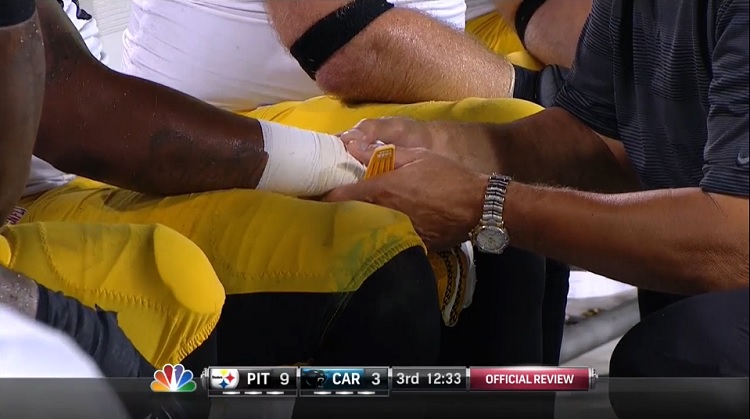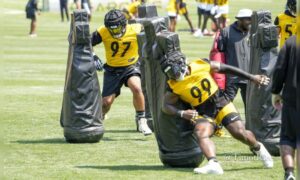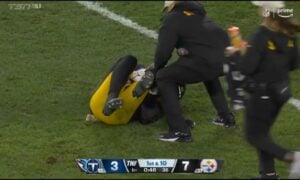When reflecting back on the second season in the young career of Jarvis Jones, the Pittsburgh Steelers’ 2013 first-round draft pick, the discussion is almost invariably solely focused on his play during the first 11 quarters of the season, before he suffered a wrist injury that kept him out of 10 straight games.
This is despite the fact that he did return, playing in the last four games of the regular season, as well as the playoff game, for a snap count that totals over a third of his accumulated playing time for the year. That seems like a substantial chunk of tape that is largely dismissed.
It’s a chunk of tape that is easily worth forgetting. But I would also argue that it’s tape that deserves to be forgotten, because it’s plain and simply uninformative, and not representative of reasonable expectations for Jones.
After Jones came off of the injured reserve list, he played a little over half of the snaps at right outside linebacker in a rotation with Arthur Moats, who was the starter, but when James Harrison returned for the final two regular season games and the postseason, Jones’ snap count nearly evaporated.
He only managed to amass four tackles upon his return in about 85 snaps, two of which were assists, while recording no pass deflections or sacks, and very little pressure. He was just outright ineffective at best.
But that was not surprising, nor was it unexpected, and there are two reasons for that: his wrist injury was clearly a bigger issue than acknowledged at the time; and the Steelers chose to use him almost exclusively in sub-packages as a pass rusher.
The two of these factors combine to explain many things. As a one-handed pass rusher, it’s hard to generate any kind of statistics, because you see very few runs and are handicapped in your efforts to get into the backfield.
It’s unreasonable to expect him to be able to compete much for leverage on an injured wrist that has atrophied during the rehabilitation process. And of his 85 post-injury snaps, a full 76 of them came on the pass rush.
And as Jones recently revealed, that is a rehabilitation process that is ongoing, telling Mark Kaboly for the Pittsburgh Tribune-Review that he still has “some strength and motion and mobility stuff” that he continues to work on.
It’s not as though the Steelers are unfamiliar with this nature of injury. A few seasons ago, Jason Worilds played through a wrist injury that was surgically repaired during the offseason, and Keith Butler, a former linebacker who had the same injury during his career, acknowledged the significant nature of the situation.
The bright side is that the past is the past, and that goes for both the first three games of last season as well as the last five, equally. He is neither of those players anymore, and gets a fresh start to prove that he has what it takes to play the position for this defense at a high level.








